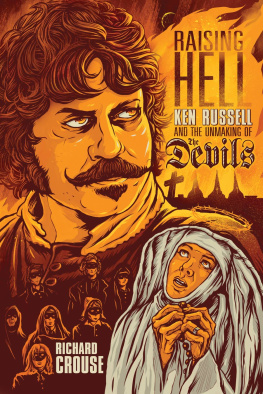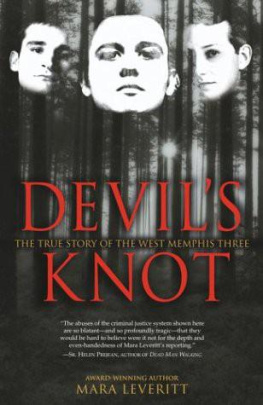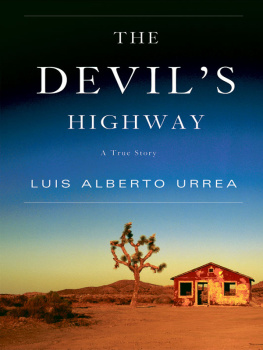
Copyright 2012 by Matthew Westfall
ALL RIGHTS RESERVED. No part of this book may be reproduced or transmitted in any form by any means, electronic or mechanical, including photocopying and recording, or by any information storage and retrieval system, except as may be expressly permitted in writing from the publisher. Requests for permission should be addressed to Globe Pequot Press, Attn: Rights and Permissions Department, PO Box 480, Guilford, CT 06437.
Lyons Press is an imprint of Globe Pequot Press.
All photos are from the authors collection and are in the public domain unless otherwise noted.
Maps by Mary Rostad Morris Book Publishing, LLC
Project editor: Meredith Dias
Layout: Justin Marciano
Library of Congress Cataloging-in-Publication Data
Westfall, Matthew.
The devils causeway : the true story of Americas first prisoners of war in the Philippines, and the heroic expedition sent to their rescue / Matthew Westfall.
pages cm
Includes bibliographical references and index.
ISBN 978-0-7627-8746-3
1. PhilippinesHistoryPhilippine American War, 18991902Prisoners and prisons, American. 2. Baler (Philippines)HistorySiege, 18981899. 3. Gillmore, James C., 18541927. 4. PhilippinesHistoryPhilippine American War, 18991902. I. Title.
DS684.W47 2012
959.9'031dc23
2012011778
To Laurie and the girls

THE USS YORKTOWN
Commander Charles S. Sperry |
13 Officers |
58 Petty Officers | 92 Enlisted Men |
THE LANDING PARTY
Ensign William H. Standley | Quartermaster John Lysaght |
THE 2ND CUTTER
Lieutenant, Commanding James C. Gillmore Jr. |
Chief Quartermaster William Walton | Gunners Mate Edward J. Nygard |
Sailmakers Mate Paul Vaudoit | Coxswain Ellsworth E. Pinkham |
Ordinary Seamen Silvio Brisolese Ora B. McDonald William H. Rynders Orrison W. Woodbury | Landsmen Frederick Anderson John Dillon Lyman P. Edwards Charles Morrissey |
Apprentices |
Albert Peterson | Denzell G. A. Venville |
THE SPANISH GARRISON
Governor Enrique de las Morenas y Fossi |
Lieutenant, Commanding Juan Alonso Zayas |
Lieutenant Saturnino Martin Cerezo |
Contract Surgeon Rogelio Vigil de Quiones y Alfaro |
47 Cazadores (Infantry) |
THE SPANISH FRANCISCAN PRIESTS
Candido Gomez Carreo |
Juan Lopez |
Felix Minaya |
THE FILIPINO ARMY OF LIBERATION
General Emilio Aguinaldo |
Lieutenant Colonel Simon Tecson |
Captain Teodorico Novicio |
400 Men |
THE US ARMY
Commanding General, VIII Corps |
Major General Elwell S. Otis |
Commander, 1st Division | Commander, 2nd Division |
Major General Henry W. Lawton | Brigadier General Arthur MacArthur Jr. |
Commander, Cavalry Brigade, 1st Division | Commander, 1st Brigade, 2nd Division |
Brigadier General | Brigadier General |
Samuel B. M. Young | Loyd Wheaton |
33rd Infantry | 34th Infantry |
Colonel Luther R. Hare | Lieutenant Colonel Robert L. Howze |
11 Officers | 71 Men | 5 Officers | 61 Men |
Prologue
The Boy Venville
This moment was one to be captured for posterity.
Twenty-three gaunt, starving men approached a gray boulder that punctuated the rock-strewn bank of the river. Wracked by disease and riddled with sores, the haggard souls mustered their last reserves of energy to hoist each other up and jostle into position. A small American flag was handed to the dazed senior naval officer of the party, Lieutenant James C. Gillmore Jr., who weakly held it aloft.
That a camera was present there and then, in the war-ravaged Philippines, two weeks shy of the close of the nineteenth century, defied all odds. Brought along by a forward-thinking army lieutenant, the Kodak folding pocket camera had been introduced in the United States just eight months earlier, in April 1899. The hand-sized marvel of photographic innovation had survived a transpacific ocean journey to the Philippines, a grueling months-long march into northern Luzon, pitched battles against insurgents, and a daring mission into the uncharted hinterlands of the Cordilleras to rescue the men now assembled.
But the journey to this site would prove to be just half the miracle: After the single photograph was snapped, consuming the final frame of the last cartridge of film, the Kodak joined the Gillmore party prisoners and 168-soldier rescue column on a harrowing ninety-mile mountain descent along a winding, turbulent river, suffering extremes of mountain frost and stifling tropical heat, and at least two dunkings in the bone-chilling current. Nonetheless, the camera and the cartridge arrived safely in Manila, as did, for the most part, the broken men.
Months later, the improbable portrait of the liberated Gillmore party ran in newspapers across the United States, accompanying a startling tale of siege, survival, and salvation. The account made colorful headlines, albeit briefly: A US Navy mission, sent to rescue a besieged Spanish garrison, had gone horribly awry. A ferocious rebel assault on a hapless cutter crew had left a number of sailors either dead or in captivity. And after more than eight harrowing months as prisoners of war, the survivors had been dramatically freed from insurgent hands by two battalions of US Army volunteer infantry. By many accounts, Lieutenant Gillmore was a hero. His survival and rescue were nothing less than triumphs of civility over savagery, underpinned by Americas daunting military might. How could anyone know that these events were just fragments of a larger story, one that had yet to be told?
And then, like all fresh news that quickly grows stale, the account of the US Navys stunning debacle at Baler, the captivity of the first American prisoners of war in a foreign land, and the US Army units sent to their rescue was lost to time. The photograph of the Gillmore party prisoners on the very morning of their liberation was filed away and forgotten. No further thought was given to the event, nor the great consequences suffered by the men involved and the country in which it occurred.










